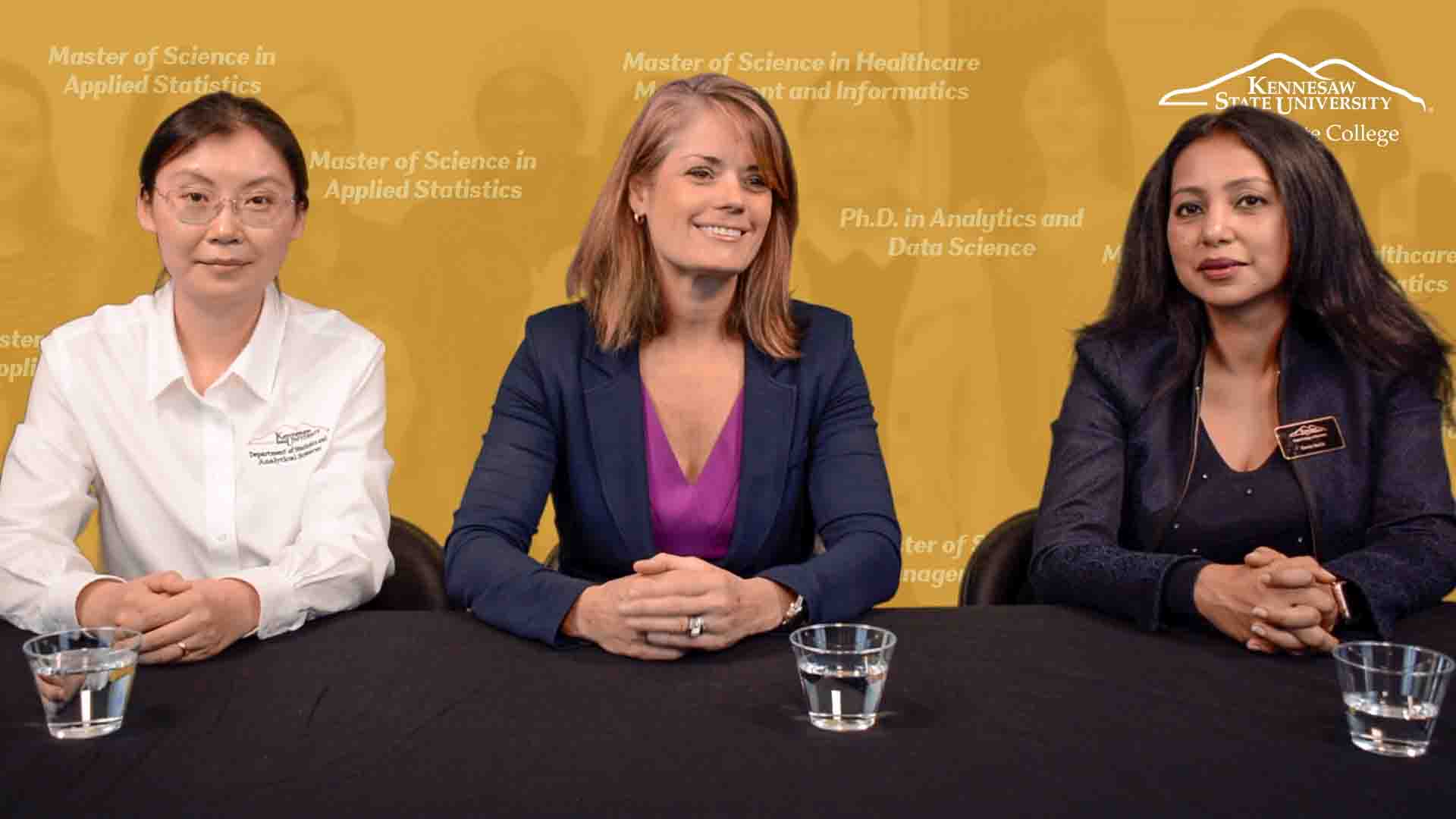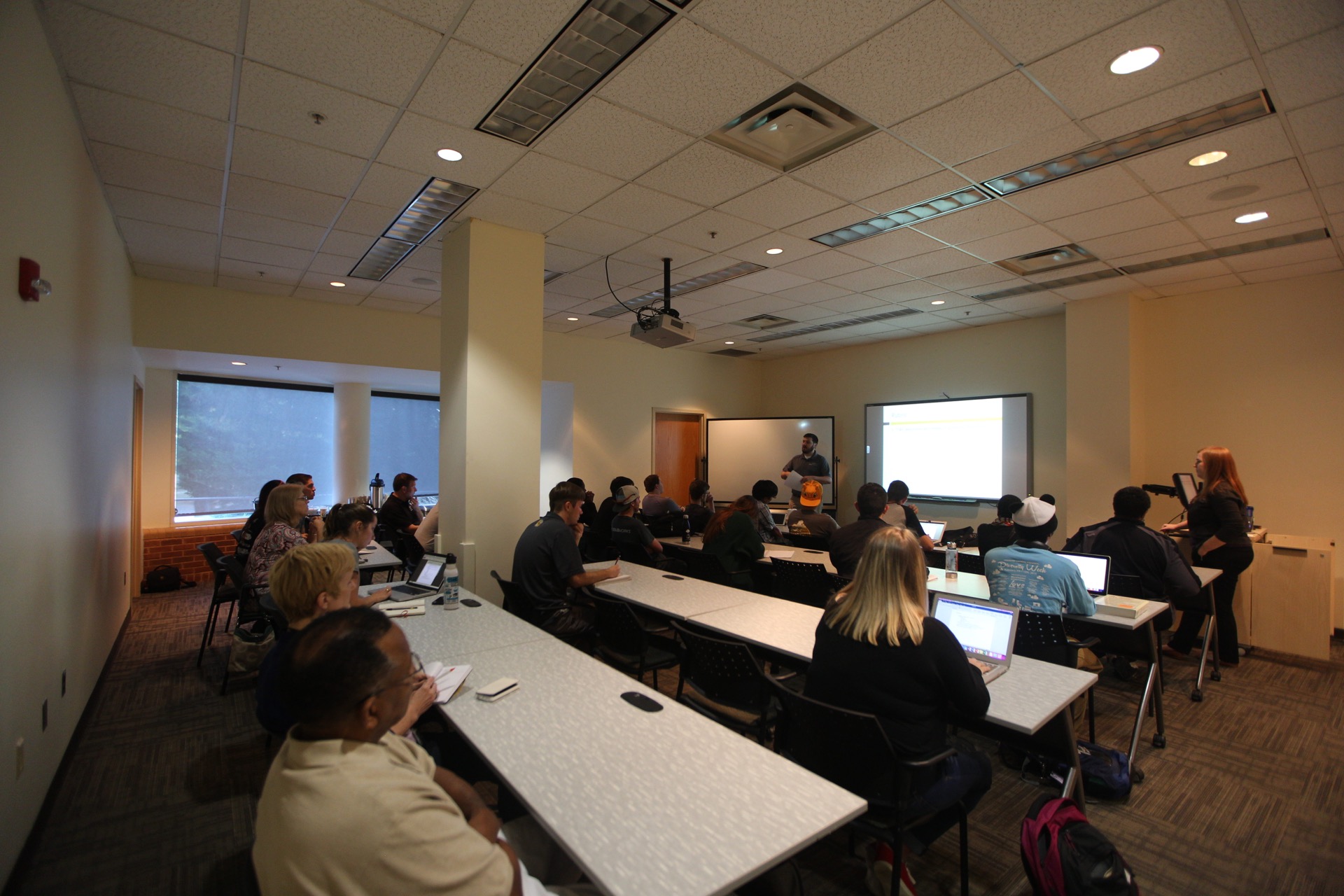Kennesaw State’s Analytics and Data Science Institute recently published videos encouraging women from different disciplines and backgrounds to explore analytics and data science as part of the “Women in Data Science” initiative.
Jennifer Priestley, executive director of the ADSI and associate dean of the graduate college, said that KSU started the Women in Data Science initiative in 2018 as a way to engage and support female students as they found their path into the analytics field.
The initiative started at KSU as part of a larger global initiative started at Stanford University. Stanford held a “Global Women in Data Science” conference on March 5 where close to 100,000 were expected to attend, according to Forbes.
The three videos published by the ADSI in May show a panel discussion, facilitated by Priestley, between KSU faculty and graduate students.
“At KSU, we are working to build an awareness of our position as a leader, specifically for young women, in computational disciplines locally, regionally and nationally,” Priestley said. “An important part of building awareness is through our communication materials, our community outreach and our online presence.”
During the panel, the women shared their backgrounds, how they got onto the path to analytics and data science and shared advice for women and girls who may be interested in these fields.
Priestley said the videos are designed to show women who are considering computational degrees that a strong female community exists in these programs, where women are usually underrepresented, at KSU. In the videos, Priestley said that more than 40 percent of the students in the data science programs at KSU are female.
According to a report from the Girl Scout Research Institute, women only account for 20 percent of the bachelor’s degrees in engineering, computer science and physics in the United States. Priestley said she believes the reason for this comes from a societal expectation that these fields are meant for men.
“When I was 8, I remember my father bringing home Pong, that he connected to our black and white TV, ” Priestley said. “As a glasses-wearing, socially awkward math nerd, I was elated, but I remember my mother saying, ‘But this is a game for boys. I don’t think you should tell anyone that Jennifer plays with this.’
“It was like a shameful family secret that their eldest daughter played a video game,” she continued. “Unfortunately, the early introduction of computers as a toy specifically targeting boys did contribute to girls of my generation perceiving that computers were for boys, and careers that used computers were for men.”
Priestley also stressed that data analysts usually come from different educational backgrounds. KSU offers a minor in applied statistics and data analysis at the undergraduate level. Since it is offered as a minor, students have the opportunity to major in another area such as psychology, marketing or physics. Priestley said that by the time students finish the minor, many of them take jobs as data analysts.
She also said many of the female students in these programs have a background in business or social sciences while most of the male students have a background in mathematics or computer science.
“One theme that I hear consistently from those who come from less computational disciplines like sociology or psychology is along the lines of, ‘I had a question, and I needed to learn how to analyze data to find the answer. And that required that I learn how to code,'” Priestley said. “Again, their paths are different, but their truth is the same.”



